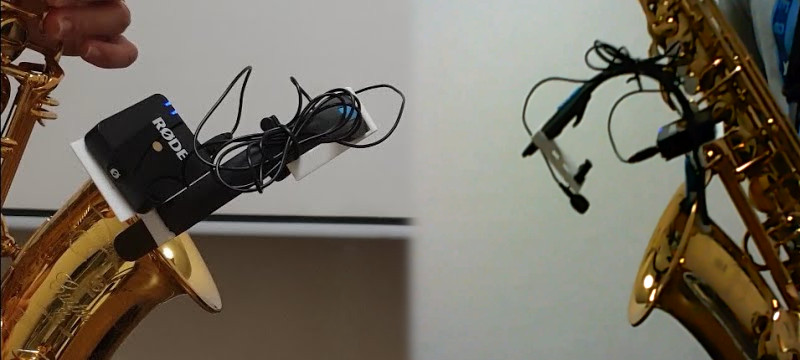Sometimes, economies of scale don’t work in our favor. While guitarists and singers will find themselves well catered to by the accessories market, players of fancier, less popular instruments will often have to dig deeper in their pockets to get what they need. [Henry Goh] found himself in need of a saxophone mic. However, off-the-shelf solutions were a touch expensive, and thus he decided he could probably whip something up himself. (Video, embedded below.)

It’s a simple solution, one that we could imagine any maker quickly whipping up with junkbox parts. Not one to skimp on quality, [Henry] picked a Rode Wireless Go paired with a lavalier mic for a quality wireless microphone solution. The real problem would be mounting the device, intended to be worn on a shirt, to the right position in front of the saxophone’s bell.
To achieve this, most dedicated sax mics used a bendable arm to allow the position to be readily changed. Instead, [Henry] whipped up some mounts on the 3D printer that would allow him to mount the Rode wireless mic hardware on an bendy Energizer LED torch. The torch even comes with a clamp allowing it to be easily attached to the instrument, making fitment a cinch.
[Henry] estimates the solution saved him up to $800 SGD. The final result is cost effective, and gives quality easily good enough for amateur and community performances. As a bonus, the hack is non-destructive, meaning you can repurpose the lavalier mic for other work as needed.
We love a good hack on the cheap, and it’s something we see all the time in the music scene. This guitar build is a great example of the form.
















I suppose a clothes peg and a bit of gaffer tape would be considered too simple to be serious.
(It’s easy to criticise, I know, I know).
That would work, but as a semi-pro musician for over thirty-four (34) years, I would be very suspect of a “pro” with that setup.
I’ve started to use loc-line coolant hose anywhere I need to run electical stuff adjustably. It’s fairly easy to bend to shape, holds pretty well, and you can run the wiring down the center of the hose for a clean installation. There are a number of snap-in termini for it so you can get an end piece that screws into a housing, for instance.
This design appears to be based on a misconception, which is that a saxophone’s sound is primarily produced at the bell. It is not. In fact only for the lowest few notes in each register is any significant sound coming from the bell; mainly the sound is produced at the highest two or so open tone holes.
Whatever the case may be, it appears that this is just based off of other sax-mounted mic designs.
I am sorry, but considering that neither the wireless portion nor the microphone portion were modified by this “hack” it should be called “Bendable sax mic clip on the cheap”
It’s 20€ …..
https://www.thomann.de/intl/the_tbone_ovid_system_sax_clip.htm
You can even modify the Ovid mic xlr to work on a rode wireless….
If he had asked a sound engineer he wouldn’t need to ‘hack’ 2 pieces of plastic.